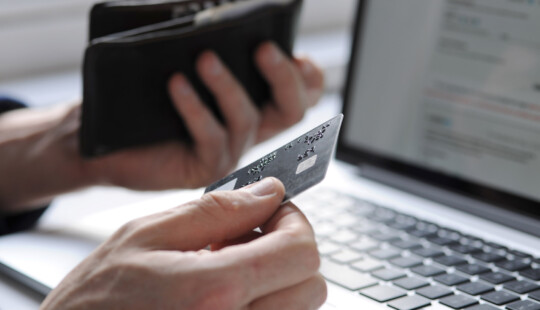Black Friday marks the beginning of the holiday shopping season and there have been great stories of record-breaking volumes, many from SAP customers that experienced success during Cyber Week, the Monday before Black Friday to Cyber Monday.
Through Cyber Week, SAP Commerce Cloud customers achieved over a 35% year-over-year (YoY) increase in the number of orders processed, an astounding amount of $110 million in peak gross merchandising value (GMV) per minute, and a 9.3% YoY increase in overall site traffic. Essential for driving site traffic and increasing conversions is customer engagement, and on Cyber Weekend, SAP Emarsys Customer Engagement supported customers with a nine percent YoY increase of overall send volume across all channels. What’s more, SAP Commerce Cloud customers achieved a 5.04% higher conversion rate versus 2022, and retailers saw a 5.2% higher conversion rate during Cyber Week.
This success was possible due to the reliability, scalability, and intelligence of SAP Customer Experience solutions for individually curated shopping journeys across the globe.
But at SAP, it is not just about the numbers. Deriving insights from data is at the heart of SAP and the start to the holiday shopping season provided a treasure trove of learnings and understanding about how people are shopping and how retailers can optimize their experiences.
By serving some of the largest brands in the world through this holiday season, here is what we learned.
Insight One: The Definition of “Holiday Season” Is Expanding
Traditionally, Black Friday is considered as a starting point for the holiday shopping season. However, recent research has revealed the holiday shopping is starting sooner and extending over the course of several weeks.
According to Criteo, an SAP commerce media partner, the longest path to purchase during the holidays is about 45 days. This includes Singles Day, originated in China, on November 11 and El Buen Fin, Mexico’s version of Cyber Weekend from November 17 to November 20.
In 2023, SAP Emarsys Customer Engagement saw a spike on Singles Day, nearly surpassing 1 billion customer engagements — for example, email, SMS, mobile push, and web push — two weeks ahead of Black Friday. This figure was then eclipsed not once but twice during El Buen Fin, which saw overall an approximate 30% YoY increase in messages delivered.
When looking at just email growth during this season, the growth of volume for the entire month of November was nearly twice what it was for Cyber Weekend. This not only underscores that holiday shopping is starting earlier, but how brands are scaling up sooner and avoiding sharp peaks, which is a win for deliverability too.
Newly emerging celebrations and extended shopping seasons also mean a higher and longer strain on e-commerce sites. However, SAP Commerce Cloud prepared the customers to combat this challenge during these peak sales times leading up to Cyber Week, and delivered 100% uptime. In fact, customers that ran holiday sales events during El Buen Fin achieved 112% growth in conversion rate, with 10% higher traffic volume compared to the regular daily average of 2023.
Insight Two: Email Still Reigns, But Omnichannel Engagement Is Rapidly Growing
While overall 2023 holiday sales are expected to increase between three and four percent, online sales are expected to double and increase between seven and nine percent. More digitally advanced customer journeys and increasingly tech-savvy buyers present an exciting opportunity for businesses to engage with shoppers more often and on their preferred channels.
Aiming to capitalize on this opportunity and remain top of mind with shoppers, SAP Emarsys customers sent a record number of omnichannel messages, resulting in a nine percent YoY increase in customer engagements from 2022. Email remained the top promotional channel in terms of volume and saw a respectable 10% YoY increase.
In addition to email, brands are also now investing heavily in omnichannel engagement strategies to meet customers where they prefer to shop. Mobile messages like SMS (35% YoY increase) and in-app (15% YoY increase) were utilized effectively alongside email, as were Web channel engagements, like Web push, which saw a whopping 74% increase in usage in 2023.
Insight Three: Personalization Proves Less is More
It is important to acknowledge that success does not equate to the quantity of messages, but also the quality. Bucking the notion that more is simply better, marketers using SAP Emarsys increased utilization of data-driven segmentation by 20% compared to Cyber Weekend 2022, enabling more targeted offers and personalized messages. While conversion rates would naturally be expected to dip given the extra volume, this targeted and personalized approach contributed to minimal or no change compared to baseline conversion rates during a typical weekend.
Similarly, AI-powered product recommendations, delivered across channels, and intelligent shopping assistants from SAP Customer Experience solutions also helped consumers find the right product or best deal among the seemingly limitless choices — with confidence and ease.
With consumers shopping for an extended period on more channels, brands have both an obligation to meet them where they are in their journey and an opportunity to earn their business and loyalty by investing in data-driven, omnichannel strategies that better match them with personalized offers on the items they wish to buy.
Insight Four: B2B Shoppers Share the Holiday Fever During Cyber Week
Black Friday is usually seen as an influential opportunity to create a revenue boost for retailers. However, SAP has the privilege of working with many B2B commerce companies in addition to a large number of retailers.
According to our data, other industries outside of retail also experience the benefits of Black Friday and Cyber Monday pushes. While the retail industry had the highest volume of orders, consumer products and wholesale distribution came in close behind. Additionally, the chemicals industry saw a huge spike in AOV over the weekend and achieved a GMV increase of 51% YoY, while life sciences industry saw more than 120% YoY GMV growth.
These data points indicate that Cyber Week trends are no longer limited to retailers, as various industries now achieve bigger sales volume and revenue during this period. Moving forward, organizations across all industries must put their best foot forward during Cyber Weekend activities to support profitable growth.
Insight Five: Black Friday Isn’t Just About the U.S. Thanksgiving Holiday Anymore
The data from SAP Commerce Cloud also reflects the globalization trend. While North America led the biggest GMV number on Black Friday, the Europe, Middle East, and Africa (EMEA) region is comparable. In fact, the highest number of orders, about 800,000, was placed in EMEA. Additionally, the Asia Pacific and Japan (APJ) region on Cyber Monday achieved over 130% growth in conversion rate compared to last year.
SAP Emarsys customers were also ready to leverage this trend and engage with customers around the world. On Cyber Monday, total send volumes saw significant YoY increases in multiple regions: by 20% in EMEA, over 27% in Middle and Eastern Europe (MEE), and over 15% in Asia.
The data also highlighted differences in how consumers shop and buy in different regions. Unsurprisingly email continued to be the most used channel across the board, though EMEA proved to be the only region, outside of the Americas, that saw high growth in email volume year-on-year with a 13% increase.
The MEE region saw a slight decrease in the use of email (-12% YoY) in favor of SMS, mobile push, and in-app messages. In APJ, where a mobile-first mindset is often the norm, usage of in-app (58% YoY growth) and mobile push (176% YoY growth) went up significantly compared to email growth (two percent YoY). Even in EMEA, SMS (53% YoY growth) and in-app (388% YoY growth) mobile messages outpaced email growth, underscoring the importance of an omnichannel strategy.
This data illustrates the global influence of Black Friday, what used to be considered an U.S.-specific sales event. For businesses across the globe, it is crucial to recognize this shift and consider customer behaviors, so they can adapt and evolve their commerce and channel engagement strategies to gain customer loyalty and boost profitability.
Next Step
As market trends evolve, organizations must proactively adopt strategies for profitable and sustainable growth. With the right blend of modern technologies, agile business processes, and customer centric strategies, businesses significantly benefit from extended shopping season, through personalized omnichannel engagements, increased conversions, and lifelong customer loyalty.
Moreover, with the right choice of cloud technologies, organizations can remain secure and compliant, while delivering reliable, scalable, and personalized experiences that are optimized for their industries.
To learn more about how SAP Customer Experience solutions can help, please visit us at sap.com/crm.
Balaji Balasubramanian is senior vice president and global head of Commerce and Industry Cloud at SAP.
*All data presented here is approximate and is based on various assumptions. All data is unaudited and is subject to adjustment. All financial figures are in USD. Data represents online and offline sales made by SAP global merchants.



